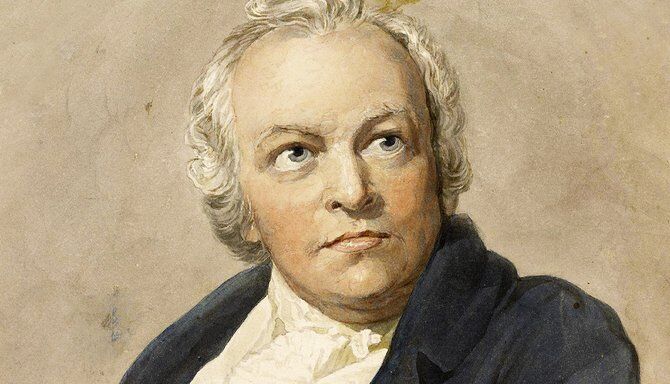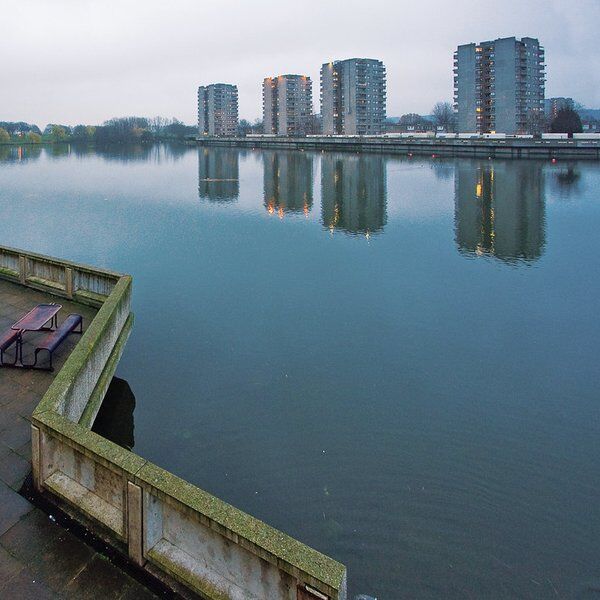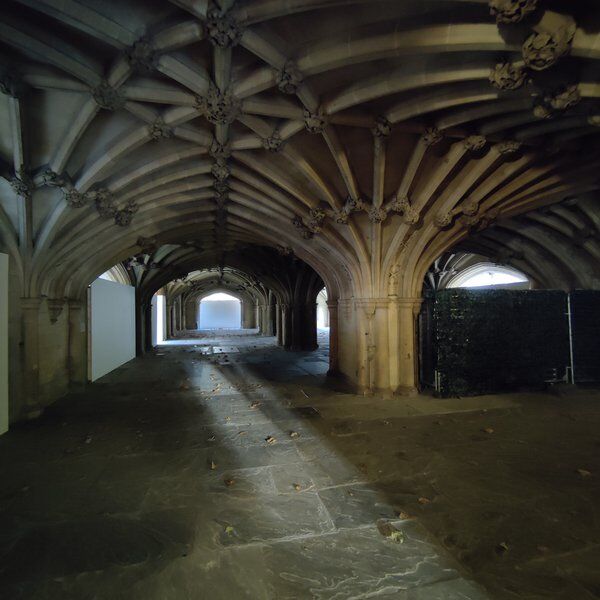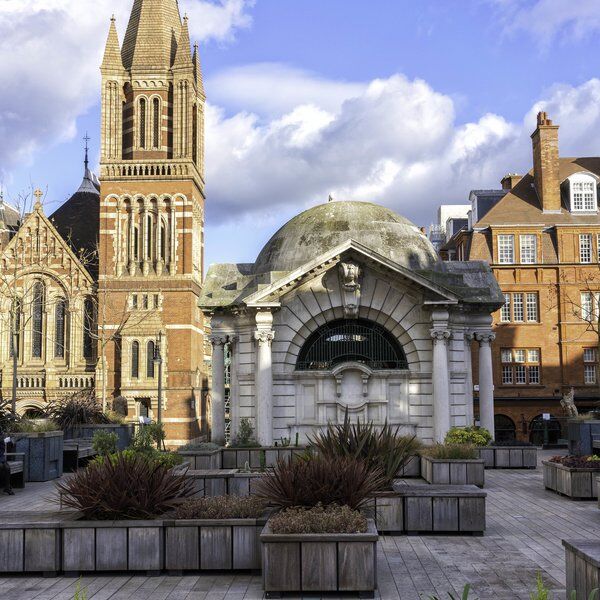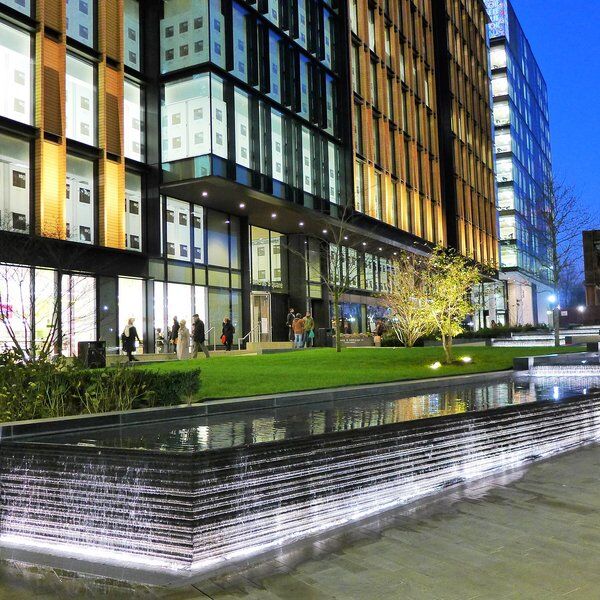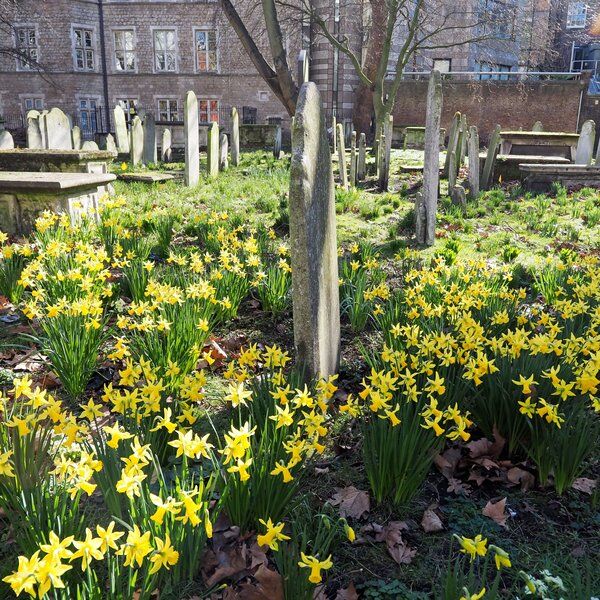William Blake's Mayfair house is a humble affair, a far cry away from the larger homes of his contemporaries: Coleridge and Wordsworth.
A Struggling Artist
Fom 1803 to 1821, William Blake lived in the ground floor apartment of this South Molton townhouse, with his wife Catherine. Here, he produced Romantic masterpieces such as, 'Jerusalem, The Emanation of the Giant Albion' and 'Milton: a poem'.
Unfortunately, his talents as a poet went largely unrecognised within his lifetime. He was forced to make his living as a printer and developed a method known as 'illuminated printing', which he used to self-publish his own works, alongside those of others.
Despite his entrepreneurial efforts, his poems still failed to bring in much of a profit. Not a single copy of 'Jerusalem' was sold until after his death. It has now been read the world over.
A Rebel For Our Age
William Blake was a man who refused to bend to his oppressive surroundings, a fact which may well have exarcebated his commercial difficulties. Despite popular opinion, he was fiercely opposed to slavery and the abuse of power he witnessed all around him.
It should come as no surprise, then, that he was opposed to the English monarchy. His rebelliousness didn't stop there, however. He was also a critic of the left, seeing the French and the American Revolutions as having replaced one tyrant with another: feudalism with rampant mercantilism.
Blake did not pander to any audience and for this he suffered
If his willingness to criticise both sides of the debate did contribute to his poetry's lukewarm reception on release, then it could equally explain their longevity.
Thank God I never was sent to school, to be flogged into following the style of a fool.
An Individual Above All Else
As with many others whose works have survived the ages, what most defined Blake was his refusal to let people think for him.
Like other working-class children of the time, he was home-schooled by his mother. Slightly less common, his father was a devout Swedenborgianist- a sect of Christianity that rejected the idea of organised religion. These influences combined in Blake to form a staunch individualist who believed that divinity and the exercise of imagination were one and the same.
He was never going to be one of the herd.
The imagination is not a state: it is the human existence itself.
Insanity Is A Closed Mind
The diminutive size of William Blake's house did nothing to narrow his worldview. He believed in knowns and unknowns, not impossibilities. Some thought him mad, because he said that he had visions. He, in turn, thought them closed off, because they no longer did.
His poems often spoke of love, forgiveness, infinity, friendship and imagination. He believed that commiting oneself to a single set of views was insanity. Life could never be that simple.
The man who never alters his opinion is like standing water, and breeds reptiles of the mind.
Blake Today?
Often, I wonder what Blake would make of today's world? He would think it wonderful, I am sure. And he would find it appalling. He would laugh with sorrow and cry with joy. There are many things he would have to say, but, in a way, he has already said them. His words are so universal that it is hard not to hear their echo in the contemporary world.
Even 200 years after his death, he still has much to give us, some things poetic, and some so simple that their truth is too often forgotten.
To generalize is to be an idiot
William Blake's House is currently owned by the Blake society, whose members include Neil Gaiman, Alan Moore and Philip Pullman. Its office walls are hung with the hand-written quotes of Blake and his contemporaries, keeping the spirit of his writing alive and fierce.
Another place worth checking out if you're interested in Blake's open-minded way of interpretting the world is the Victor Wynd Museum, a museum where curiosity reigns free over curation.
Interested in finding more places like this? Try one of our Treasure Trails in London - untangle cryptic clues as a team, as you are taken on a journey to the most unique, unusual and bizarre corners of London.
Looking for things to do in Mayfair? Check out our article on the top things to do in Mayfair for more suggestions.
